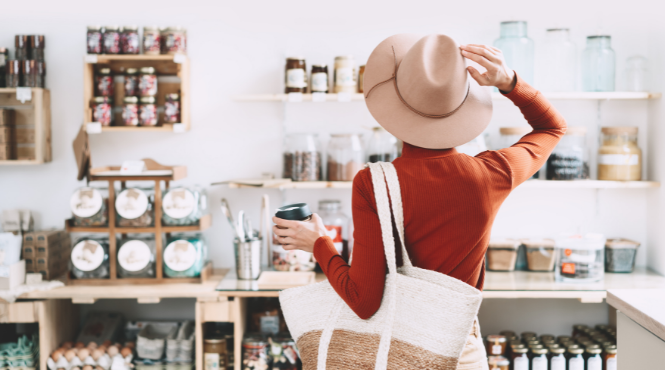Five Big CPG Trends We’ll See in the Next Five Years
We don’t always need a crystal ball to see the future. However, the current state of CPG marketing trends gives us a lot of information about how things are going and how we can expect them to develop over the coming years. Although disruption can happen and evolving technology has the power to divert the current path, we can see some solid trends that are sure to be around for a while.
Emerging Brands Challenge the Stalwarts
While disruption is often the goal with emerging brands, many are satisfied with simply carving a niche for themselves. This could be the difference between Dollar Shave Club, which massively affected Gillette’s share of the razor market and completely changed the CPG game, and Sunbasket, which carved its own niche out of a whole disruptive industry—the meal kit delivery service—and targets healthy eating enthusiasts among all buyers who subscribe to meal kit deliveries.
Regardless of their end goals, emerging brands will continue to challenge legacy CPG brands.
Increased Private Labeling
One way emerging brands are expediting their entry into the consumer consciousness is through increased private labeling. Private labeling is the process of selecting products that have already been developed and then adding your brand to the mix. Grocery brands already do this, such as Walmart’s Great Value brand or Target’s Archer Farms.
Private labelers don’t need the backing of a multi-million dollar company to make a dent in the CPG marketplace, though. Consider Conor McGregor’s Proper 12 whiskey brand as an example—it’s privately labeled from the parent company of Bushmill’s distillery. Kylie Cosmetics is another massively popular brand that’s privately labeled. Her brand and ColourPop are just two huge names manufactured under the same roof.
DTC
Direct-to-consumer (DTC) sales reached $17.75 billion in 2020, showing 20% growth over the previous year. An increase in online shopping during the pandemic is a significant factor in this growth, but don’t expect those numbers to decline any time soon.
While consumers say they trust legacy retailers to be more reliable, those numbers most likely will continue to change. Customer service improvements will help, with 26% of Americans saying that better service will seal the deal for making a DTC purchase.
DTC also offers better control, agility in marketing, and clearer insight into what their buyers want. Without retail middlemen like Amazon and Walmart muddling things, the sales numbers are clear.
Omni-Channel Shopping
Emerging, niche and white label brands will have yet another edge over legacy CPG manufacturers in the coming years, with their ability to offer omni-channel experiences that deliver a consistent, personalized experience for shoppers across all channels and devices.
Legacy brands are often steeped in tradition and less agile, so reorganization is more complicated than organizing a new brand for omni-channel sales from the beginning. But as legacy brands continue to shift their supply chains, logistics, and technology, they’ll soon catch up – perhaps even becoming the driving force behind omni-channel shopping in the coming years.
Sustainable Products and Packaging
Sustainable products will fetch $150 billion this year in the United States, and that dollar amount is expected to grow each year. In fact, 11% of consumers say they would switch brands to protect the environment, 5% say they’d switch due to climate change, and another 5% would seek new products if they felt the brand wasn’t transparent enough.
Millennials started the fight for more sustainable products, but Generation Z is expected to up the ante in the coming years. No longer will the onus be on individual consumers but on the corporations that produce 71% of carbon emissions.
CPG brands can no longer rely on the old ways of doing business; they must continue to embrace new marketing strategies to stay ahead of competitors or risk becoming irrelevant.

